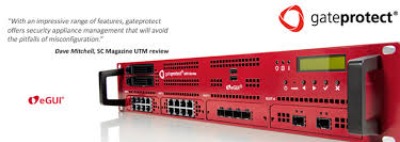Abstract: In today's complex threat landscape, organizations face escalating challenges in securing their networks and data. Unified Threat Management (UTM) solutions offer a consolidated approach to network security, integrating multiple security functions into a single appliance. This white paper explores the benefits, use cases, and key considerations for implementing UTM solutions, providing a comprehensive overview for organizations seeking to simplify and strengthen their security posture. Real-world use cases and references to industry reports and vendor resources enhance the paper's
White Paper: Streamlining Cybersecurity with Unified Threat Management (UTM) Solutions
Enhancing Security, Simplifying Operations, and Driving ROI for SMEs
Executive Summary
In an era of increasing cyber threats and regulatory scrutiny, organizations must prioritize cybersecurity without compromising operational efficiency or budget. Unified Threat Management (UTM) solutions present a powerful, cost-effective strategy to streamline IT security by consolidating key functions—firewalling, antivirus, intrusion prevention, content filtering, and more—into a single, centrally managed platform. This white paper examines the role of UTM in modern cybersecurity strategy, key benefits and risks, real-world use cases, a SWOT analysis, and how KeenComputer.com can assist organizations in implementing scalable and secure UTM solutions.
1. Introduction
The digital economy is growing rapidly, but so are threats to network infrastructure. Businesses, especially small and medium enterprises (SMEs), face increasing difficulty in defending against malware, ransomware, phishing, and data breaches, often with limited IT budgets and staff. Unified Threat Management (UTM) offers a consolidated and cost-efficient approach by integrating multiple security capabilities within a single appliance.
2. What is Unified Threat Management (UTM)?
Unified Threat Management (UTM) refers to an integrated security platform that combines several cybersecurity technologies into one appliance or cloud-managed service. A typical UTM solution includes:
- Firewall and Network Access Control
- Intrusion Detection and Prevention (IDS/IPS)
- Antivirus and Antimalware
- Spam Filtering
- Content Filtering and Web Security
- Virtual Private Network (VPN) Gateway
- Data Loss Prevention (DLP)
- Application Control
- Real-time Monitoring and Reporting
This consolidation reduces complexity, centralizes threat response, and offers better visibility into the organization’s security posture.
3. Business and Technical Benefits of UTM
3.1 Operational Efficiency
- Centralized Management Console: Reduces the need to manage multiple vendors and interfaces.
- Unified Policy Enforcement: Consistent application of security rules across the network.
3.2 Cost-Effectiveness
- Lower Total Cost of Ownership (TCO): One appliance versus several specialized tools.
- Simplified Licensing: A single license often covers multiple capabilities.
3.3 Improved Security
- Real-Time Threat Intelligence: Up-to-date malware definitions and AI-enhanced pattern recognition.
- Reduced Security Gaps: Minimized risk of misconfigured or unmonitored devices.
3.4 Scalability and Compliance
- Supports Remote and Hybrid Workforces: Secure VPN access and endpoint monitoring.
- Facilitates Compliance: Easier audit trails for GDPR, HIPAA, PCI-DSS, and ISO 27001.
4. Use Cases of UTM Solutions
Use Case 1: Retail Store Chain (SMB)
- Secure credit card transactions
- Real-time POS monitoring
- Guest Wi-Fi isolation
Use Case 2: Remote-First Small Business
- Site-to-site VPNs for remote teams
- Secure BYOD access
- Content filtering for productivity
Use Case 3: Educational Institution
- CIPA-compliant internet usage
- Protection against student data leaks
- Custom access policies for faculty vs. students
Use Case 4: Healthcare Provider
- Encrypted communications for telemedicine
- HIPAA-compliant patient data security
- Medical IoT device protection
Use Case 5: Manufacturing Facility
- OT network segmentation
- Protection of PLCs and SCADA systems
- Real-time intrusion prevention
5. SWOT Analysis of UTM Solutions
|
Strengths |
Weaknesses |
|---|---|
|
- Centralized security operations- Easier compliance- Lower cost for SMEs- Simplified troubleshooting |
- One point of failure- Not as deep as best-in-class tools- Performance may degrade under high loads |
|
Opportunities |
Threats |
|---|---|
|
- Rising demand in SMEs and educational sectors- Integration with cloud-native platforms- Growth in remote/hybrid work security needs |
- Rapidly evolving threats- Zero-day vulnerabilities- Misconfigurations by untrained admins- Vendor lock-in risks |
6. Vendor Landscape and Selection Criteria
Leading UTM Vendors:
- Fortinet (FortiGate)
- Sophos (XG Firewall)
- WatchGuard
- Palo Alto Networks (SME models)
- Cisco Meraki (Cloud-based UTM)
Key Evaluation Criteria:
- Performance Benchmarks
- Ease of Deployment
- Feature Completeness
- Technical Support Availability
- Integration with Existing Infrastructure
7. How KeenComputer.com Can Help
KeenComputer.com brings over two decades of IT service excellence in cybersecurity, network infrastructure, and managed services. Our expert team works closely with clients to deploy customized UTM solutions that are secure, scalable, and cost-effective.
7.1 Security Assessment & Planning
- Security gap analysis and needs assessment
- Tailored UTM strategy aligned to business goals
- Compliance-readiness consulting (e.g., HIPAA, PCI-DSS)
7.2 Deployment & Integration
- On-premises or cloud-based UTM setup
- Integration with VPNs, Active Directory, and cloud apps
- Multi-site UTM rollouts for distributed teams
7.3 Monitoring, Reporting & Incident Response
- 24/7 UTM monitoring through managed services
- Real-time alerting and response to threats
- Centralized reporting dashboards with actionable insights
7.4 Training and Capacity Building
- Admin and user training for UTM use and policy management
- Documentation of best practices
- Knowledge transfer to in-house IT teams
7.5 Long-term Support
- Firmware updates, patch management, and scalability audits
- SLA-backed helpdesk and troubleshooting
- Quarterly security review meetings
Contact KeenComputer.com today to schedule a free consultation and learn how UTM solutions can protect and grow your business in the digital age.
8. References
- Gartner, “Magic Quadrant for Network Firewalls”
- IDC, “Worldwide Security Appliance Tracker”
- NSS Labs, “Comparative Testing of Unified Threat Management Appliances”
- NIST Cybersecurity Framework – https://www.nist.gov/cyberframework
- Fortinet – https://www.fortinet.com
- Sophos – https://www.sophos.com
- WatchGuard – https://www.watchguard.com
9. Conclusion
In a hyperconnected world, cybersecurity must be proactive, comprehensive, and manageable. Unified Threat Management (UTM) platforms deliver on all three fronts by consolidating critical security functions into a single solution. For SMEs, schools, healthcare, and distributed enterprises, UTM offers a balance of protection and simplicity. KeenComputer.com stands ready to help organizations select, implement, and maintain robust UTM strategies tailored to their unique environments and risk profiles.
